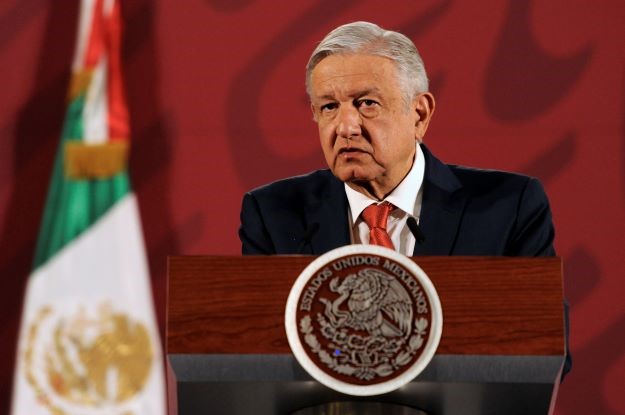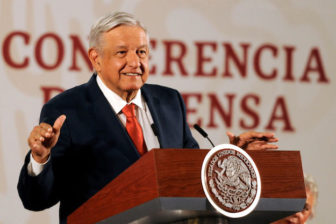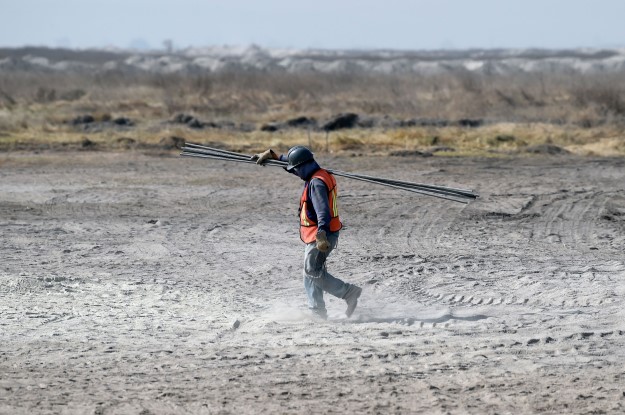This article is part of a continuing series on Latin America’s fiscal response to COVID-19.
When Andrés Manuel López Obrador assumed the presidency in Dec. 2018, investors worried that public spending would increase if Mexico were to face an exogenous economic shock. As the mayor of Mexico City (2000-2005), AMLO had been fairly fiscally responsible. But markets distrusted President López Obrador’s populist agenda, particularly given Mexico’s challenging economic outlook.
Well, currently, the mother of all shocks is hitting the Mexican economy, with economists expecting a 7% GDP contraction in 2020. One would have expected this to be the time for dropping “fiscal discipline,” particularly as coronavirus-related deaths continue to rise.
However, AMLO is turning out to be a fiscal hawk in times of crisis – to an extreme that few would have imagined. Mexico has insisted on avoiding, as much as possible, any increase in debt issuance. As a first course of action, the government announced the combination of stabilization fund usage and hefty payroll cuts for upper-level government bureaucrats.
Meanwhile, AMLO has opted for a minimalist approach to fiscal stimulus. The government announced a package to face the pandemic equivalent to 3% of GDP. However, most of it is based on reshuffling previously planned spending: We estimate additional spending for the pandemic at only approximately 0.6% of GDP.
The number is significantly smaller than in other Latin American countries. Brazil created a separate “War Budget” against COVID-19 of over 3% of GDP. Stimulus in less indebted countries, such as Chile and Peru – both governed by center-right presidents – could reach around 7% of GDP. Even Argentina, which has very limited funding sources, is implementing a package of close to 2% of GDP.
Although small, Mexico’s stimulus and the very large fall in revenues – from the economic recession and the collapse in oil prices – will push fiscal deficit to 4.5% of GDP in 2020, up from 2.3% in 2019. Public sector debt will increase to around 52% of GDP in 2020, significantly above the 44.8% level in late 2019. The finance ministry estimates that more than half of the increase would be due to currency depreciation.
What is behind AMLO’s fiscal conservatism? Two main factors. First, AMLO truly believes that increasing debt is detrimental to the economy. To be clear, he is not thinking like an economist about “intertemporal budget constraints,” basing his decisions on complex present value calculation of cashflows. In fact, AMLO disdains technocrats in general and economists in particular. Instead, the Mexican president seems to view the country much like a large firm or a household. Increasing the firm or household’s debt ratios will likely lead to crisis in the future, so it must be avoided at any cost. Of course, this is the view that prevailed prior to the advent of macroeconomics. Now we know that a fiscal expansion during a recession can in fact lower debt ratios if it helps mitigate the negative impact on output.
The second factor behind AMLO’s fiscal conservatism is the belief that supporting large companies will lead to corruption, even if that could increase the chances of keeping workers employed. Therefore, AMLO’s wants to assist small firms and the low-income population, while moving on with his investment projects and minimizing debt issuance.
Mexico has a structurally vulnerable fiscal front. Its tax-collection revenue is low: 13.5% of GDP, compared to Latin America’s average of 23%. And although the reliance on oil revenues has been decreasing fast, it remains sizable at 17.5% of total revenues. To mitigate such vulnerabilities, the government has the largest hedge against drops in oil prices in the world. However, such hedges only protect the fiscal accounts for the following year. In 2020, the government will receive money from the hedge if oil prices remain low, but it might not be able to hedge its oil revenue for 2021. The state-owned oil company, Pemex, has but a small hedge and is therefore mostly unprotected from falling oil prices.
Increasingly worried about these vulnerabilities, ratings agencies have delivered blows to the government’s credibility. Moody’s and Fitch downgraded Mexico’s rating, but maintained its investment grade. Standard and Poor’s put the country on negative watch. Perhaps more ominous was Fitch and Moody’s decision to downgrade Pemex’s debt to “junk,” precluding investment-grade only funds from purchasing Pemex bonds. The state oil company is highly indebted and could become a source of fiscal weakness if the federal government moves to support it additionally.
Despite fiscal austerity, the market reaction has been negative. Recently, Mexico tapped the dollar market with a big issuance of $6 billion. However, the long bonds were issued at a similar yield-to-maturity as Paraguay’s bond issuance around the same time, although the Paraguayan rating is between one and three notches below Mexico’s.
Rating agencies and investors are worried about the type of public spending and if austerity will aggravate the recession. But most of all, they fear the general direction of economic policy in Mexico.
The government has insisted on investing in four big investment projects: the Maya train, the Istmo project, a new refinery and the revamp of a military base as a second airport in Mexico City. Private participation in these projects has been limited and they are unlikely to spur the economic push envisioned by AMLO.
The government has decided to continue these projects even as revenues collapsed due to the economic crisis. Even more troubling, investors’ confidence in Mexico has decreased substantially due to several consequential decisions made by the government recently – such as the cancelations of the Mexico City airport and the Constellation Brands beer plant in Baja California. Also, the lack of implementation on the energy reform has been a profoundly negative signal.
Without clear policies to restore the confidence of the private sector, austerity will be futile at best – but it can also become a dangerous trap. If Mexico continues on the current path, additional spending cuts will be needed just to keep debt ratios from ballooning. These cuts could in turn aggravate the recession.
The government alone cannot break this cycle. It will need the private sector to minimize the economic fallout of COVID-19.
—-
Berber is the chief economist for Latin America at Natixis






